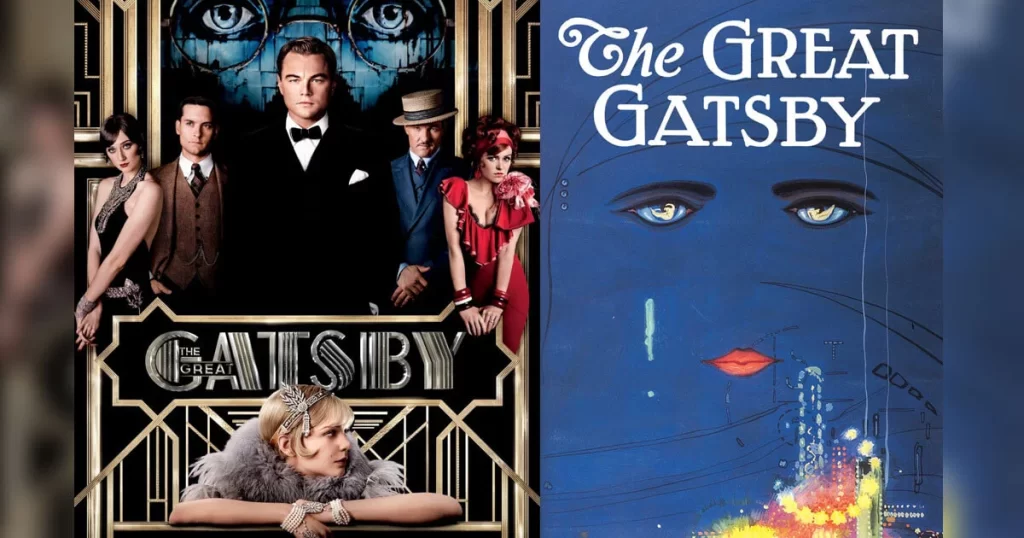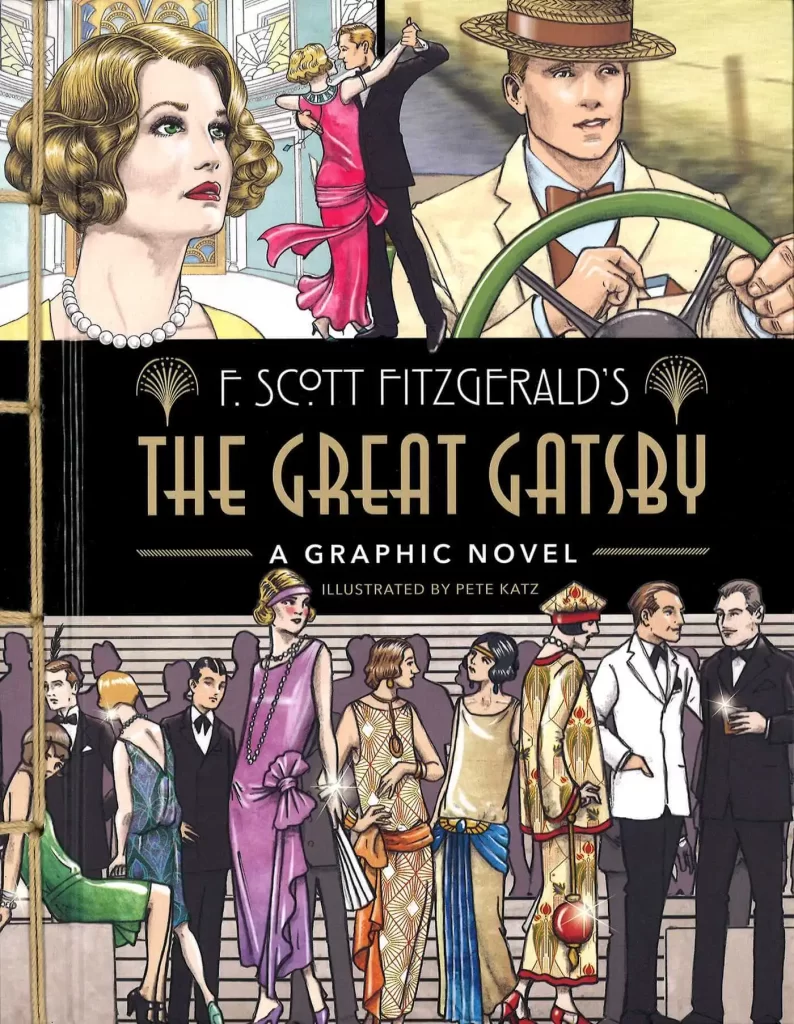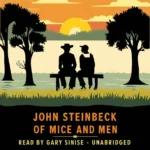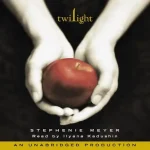F. Scott Fitzgerald’s The Great Gatsby PDF is a well-known American literary classic. This captivating novel, set in the roaring 1920s, delves into themes of love, wealth, social class, and the American Dream. In this article, we will explore the significance of The Great Gatsby and discuss how to access the PDF version of this literary masterpiece.
Detail of Book
| PDF Title | The Great Gatsby PDF |
|---|---|
| Book File Type | PDF Download / Read Online |
| PDF Author | F. Scott Fitzgerald |
| No of Pages | 137 |
| Book Size | 1.40 MB (1,474,560 bytes) |
| PDF Category | Novel , Tragedy, Psychological Fiction |
| Publisher / Publication | April 10, 1925 (Charles Scribner’s Sons) |
| Chek Latest version | |
| PDF Language | Enlgish |
Table of Contents

The Roaring 1920s: Setting the Stage for The Great Gatsby
The Great Gatsby is set during the vibrant era known as the Roaring Twenties. This period marked a significant cultural shift in America, characterized by economic prosperity, jazz music, and flamboyant parties. The novel brilliantly captures the decadence and excesses of the time, while also shedding light on the darker undercurrents of society.
F. Scott Fitzgerald: The Brilliant Mind Behind the Novel
F. Scott Fitzgerald, an iconic American author, penned The Great Gatsby in 1925. Fitzgerald’s own experiences and observations of the wealthy elite inspired him to write this compelling tale. His lyrical prose and keen insight into human nature continue to captivate readers to this day.
Characters That Define The Great Gatsby
The Great Gatsby introduces us to a cast of complex characters whose lives intertwine in a web of love, ambition, and tragedy.
Jay Gatsby: A Mysterious Millionaire
Jay Gatsby, the enigmatic protagonist, is a self-made millionaire who throws extravagant parties at his opulent mansion. His unwavering pursuit of Daisy Buchanan—a woman from his past whom he still holds in the highest regard—is what motivates him.
Daisy Buchanan: The Unattainable Love
Daisy Buchanan, Gatsby’s love interest, represents the unattainable and elusive nature of the American Dream. Her charm and allure fascinate those around her, but she is torn between love and societal expectations.
Nick Carraway: The Narrator’s Perspective
Nick Carraway, the novel’s narrator, provides a unique vantage point into the lives of the characters. As an outsider looking in, he serves as a moral compass, observing and commenting on the extravagance and disillusionment of the upper class.

Exploring the Themes in The Great Gatsby
The Great Gatsby tackles several profound themes that resonate with readers across generations.
The Illusion of the American Dream
One of the central themes in the novel is the illusion of the American Dream. Gatsby’s relentless pursuit of wealth and love reflects the belief that anyone can achieve success and happiness through hard work and determination. However, the novel portrays the hollowness of this dream, revealing the emptiness that lies beneath the surface.
The Corruption of Wealth and Power
Fitzgerald explores the corrupting influence of wealth and power in The Great Gatsby. The characters’ lavish lifestyles mask their moral decay and unethical behavior, highlighting the moral bankruptcy that can accompany excessive materialism.
Love, Obsession, and Tragedy
Love, obsession, and tragedy intertwine throughout the novel. Gatsby’s unwavering love for Daisy drives him to extreme lengths, ultimately leading to a heartbreaking conclusion. The novel explores the destructive power of obsession and the tragic consequences it can have on individuals.
The Enduring Legacy of The Great Gatsby
The Great Gatsby has left an indelible mark on the literary landscape. Its exploration of timeless themes and exquisite prose continue to resonate with readers, making it a perennial favorite in classrooms, book clubs, and literary discussions.
The Great Gatsby Characters
“The Great Gatsby” by F. Scott Fitzgerald is a classic novel that showcases a captivating array of characters. Set in the 1920s, the story revolves around Jay Gatsby, a mysterious and enigmatic millionaire. Gatsby is driven by his undying love for Daisy Buchanan, a beautiful and wealthy married woman. Daisy, on the other hand, is a complex character torn between her love for Gatsby and her allegiance to her husband, Tom Buchanan. Tom is an arrogant and affluent man who represents the old money and social elite of the era.
Nick Carraway, the narrator of the story, serves as a window through which readers observe the events unfolding. He is a young, impressionable man who becomes entangled in the lives of these characters. Jordan Baker, a professional golfer, adds a touch of sophistication and a sense of intrigue to the narrative. She becomes romantically involved with Nick and possesses a cynical worldview.
Other memorable characters include Myrtle Wilson, Tom Buchanan’s mistress, who longs for a life of luxury and social status, and her husband, George Wilson, a working-class man who is oblivious to her affair. These characters, each with their own aspirations, flaws, and complexities, come together in a tale that explores the elusive American Dream, the corrosive power of wealth, and the consequences of obsession and decadence. Fitzgerald’s masterful portrayal of these characters continues to resonate with readers, making “The Great Gatsby” a timeless literary work.
Themes in the Great Gatsby
F. Scott Fitzgerald’s “The Great Gatsby” examines a number of important topics that recur throughout the book. The American Dream and its corruption are recurring subjects. The story’s protagonists are motivated by their goals of achieving social prestige, professional achievement, and material prosperity because they think these things will make them content and happy. Fitzgerald, however, exposes the American Dream’s shadowy underbelly, exposing its hollowness and the moral degradation that results from the unrelenting chase of material gain.
The illusion of the past is one of the book’s other themes. The characters are plagued by their pasts, and, more so than any other, Jay Gatsby is attempting to forget or reconstruct them. Desperate to relive an idealized past with Daisy, Gatsby builds an ostentatious façade and throws opulent parties in an attempt to win her back. The book examines the terrible results and pointlessness of holding onto a romanticized past.
Social class and social stratification are also prevalent themes. The divide between the old money aristocracy and the newly rich, like Gatsby, is starkly portrayed. Fitzgerald critiques the shallowness and superficiality of the upper class, as well as the limitations imposed by social status.
The topic of moral and ethical bankruptcy is also examined. The characters in “The Great Gatsby” frequently cheat, are unfaithful, and use deceit to further their own agendas. This theme draws attention to the moral emptiness that can result from unrelentingly pursuing wealth and social status.
Last but not least, “The Great Gatsby” paints a vivid picture of a society driven by ambition, materialism, and, in the end, disillusionment by examining topics like moral bankruptcy, social class, the American Dream, and the illusion of the past.

Conclusion: The Great Gatsby PDF
The Great Gatsby stands as a literary gem that continues to captivate readers with its exploration of love, wealth, and the illusory nature of the American Dream. F. Scott Fitzgerald’s masterful storytelling and vivid characters have secured the novel’s place in the pantheon of great American literature.
Frequently Asked Questions about The Great Gatsby PDF
Is The Great Gatsby a difficult read?
While The Great Gatsby may require some level of literary analysis, it is a compelling and accessible read for book enthusiasts of all backgrounds.
Why is The Great Gatsby considered a classic?
The Great Gatsby is considered a classic due to its enduring themes, exquisite prose, and the profound insights it offers into the human condition.
What is the significance of the novel’s setting in the 1920s?
The 1920s setting of The Great Gatsby serves as a backdrop for exploring societal excesses, the Jazz Age, and the pursuit of the American Dream.
Is The Great Gatsby hard to read?
For the most part, Gatsby is straightforward. It’s got some funny 1920s turns of phrase, like “ecstatic cahoots” (8.46), but you’re not going to run into too many unfamiliar words.
How many chapters is Great Gatsby?
Answer and Explanation: The Great Gatsby includes nine chapters.
Why is The Great Gatsby so famous?
It explores universal themes—human follies, the hopelessness of societal constructs, and man’s struggle with time and fate.





